In early May, as President Barack Obama crisscrossed the United States revealing details of a dire National Climate Assessment, Stanford University joined the movement that began on November 13, 2012, at a 350.org event during which Unity College President Stephen Mulkey announced that his institution had divested from investments in fossil fuels.
Stanford will now comb through its $18.7 billion endowment, divesting from its shares in coal-mining companies. The move comes just weeks after Pitzer College of Claremont, California, announced its intention to divest from investments in fossil fuels and improve campus sustainability efforts.
If the immediate goal of the divestment movement is to strip fossil fuel companies of their social contract to pursue a business model that is inconsistent with the long-term sustainability of human habitation on earth, then the objective of education reform as proposed by Mulkey is to reframe higher education to produce graduates with the real-world skills necessary to save humanity.
Sustainability Science and Education Reform
“Now that Stanford University has taken this important step, it is not improbable to think that Harvard University will seriously reconsider its continued resistance to calls by its faculty and students to divest,” noted Mulkey, an internationally regarded scientist.
Mulkey and McKibben have been among the most recognizable and ardent champions of the growing divestment movement, speaking at events across the United States and advising college Presidents who are considering following their lead.
For Mulkey, climate leadership includes both divestment and proposing broad changes that will make higher education more efficient, relevant to real-world problems, and collaborative. Just as Microsoft Corporation began with a series of ideas worked through on a garage work bench, so too is Unity College. Unity is a college of fewer than 1,000 students located in Maine’s mid-coastal farm country, that is modeling the most transformative initiative since the G.I. Bill opened higher education to the masses.
When Mulkey announced Unity’s divestment to cheers ringing from the audience at the State Theater in Portland, Maine, what he did not mention is sustainability science, the second part of an equation to reframe higher education. Sustainability science is the second of the one-two punch in President Mulkey’s philosophy and passionate call to action. Mulkey says that sustainability science has the capability to comprehensively address a plethora of issues related to the survivability of the planet. It challenges silos between the disciplines, threatens outdated modes of thinking, and requires faculty to learn new, collaborative ways of thinking and teaching.
While the Board of Trustees unanimously supported Unity College’s divestment, its faculty adopted Mulkey’s broad vision for education reform. The faculty voted to adopt sustainability science, the leading-edge of 21st century transdisciplinary (collaborative) environmental problem solving, including the mitigation of climate change, as its framework for teaching and learning.
There are two planks in Mulkey’s platform: sustainability and education reform.
Essentially, the growing divestment movement that Stanford University joined is one part of a multi-layered strategy. Mulkey’s comprehensive vision includes reframing of higher education for greater real world relevance. He is now holding up the college he leads as a template for others to follow and a call to action for radical change.
Prophet at the Dawn of a New Movement
Like the recent National Climate Assessment, Mulkey’s message to educators is stark and pulls no punches about the threat of global climate change. What he has done is take the next step in a comprehensive strategy for sustainability and offer a pro-active vision action. It is a vision that has the potential to transform higher education in ways that offer humanity its best chance for long-term viability.
Mulkey first presented his vision for the reframing of higher education in light of global climate change on October 7, 2013, as a featured speaker at the American Association for the Advancement of Sustainability in Higher Education (AASHE) conference in Nashville, Tennessee. Many in the capacity crowd of environmental professionals blogged about the presentation and quality of his ideas. He has since offered versions of his AASHE presentation, entitled “Crisis and Opportunity in the Environmental Century: Inspiring a Generation to Greatness,” to groups across the United States.
In June, Mulkey will release a 10 minute video that is the distillation of his core messages about the threat of climate change, need for broad action, and role of sustainability science in giving humanity a fighting chance to ensure its long-term viability.
His uplifting call to change is not only the remedy for an antiquated higher education system in need of a post-industrial retrofit, but serves as a vision for new prosperity and economic innovation through the expansion of the “green” economy.
Wednesday, May 14, 2014



